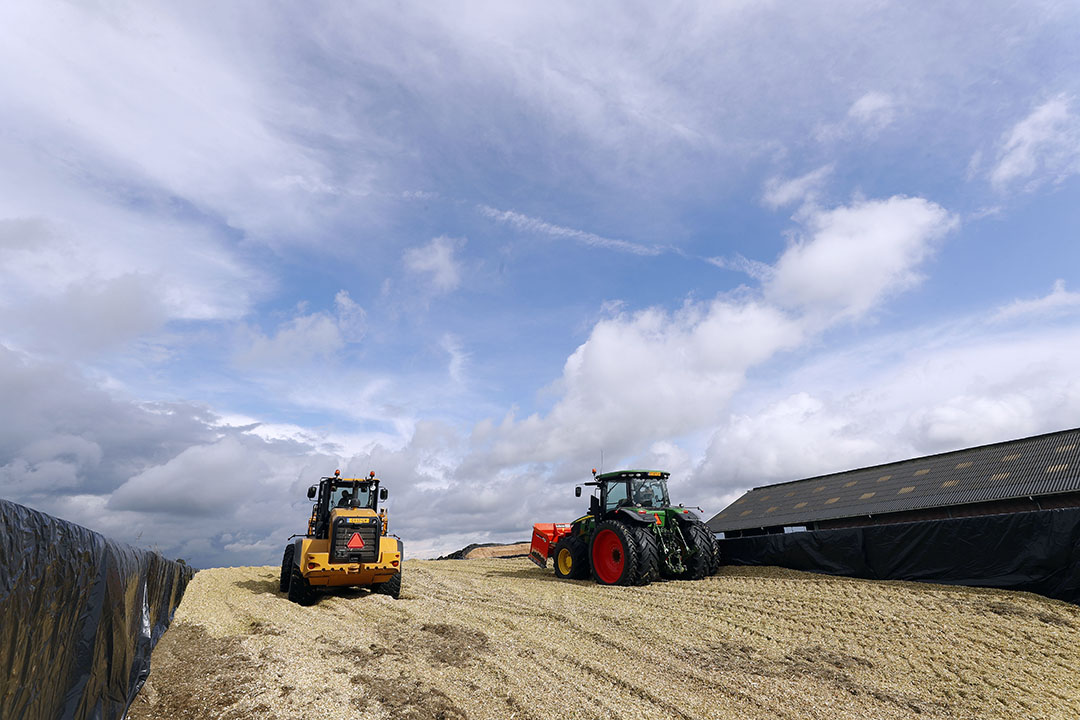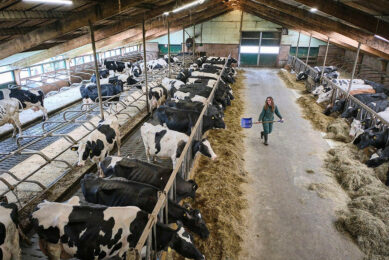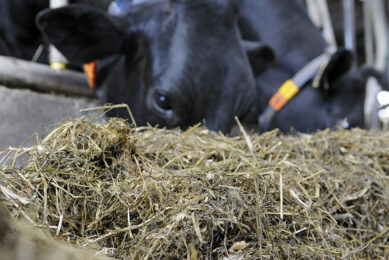Silage effluent: Problems and solutions

Silage effluent is one of the products of silage making that leaks out of the silo shortly after the start of the silage fermentation process. Here we review the key factors contributing to the production of the effluent, its modes of action, and the possible options for safe storage and disposal thereof.
Over the years, most producers have been taught that the best way to control silage runoff is by harvesting at a moisture level of around 65-75%. However, with varied weather conditions, that isn’t always possible. The amount of effluent collected varied from one year to the next because of different rainfall patterns and their effect on surface moisture and maturity of the harvested crop. In one study daily effluent flow varied from year to year between 18,000 and 38,000 l/day, essentially due to differences in surface moisture.
Additives
Formic acid increases effluent flow, particularly within the first day of ensilage by causing changes in the lipophilic fraction of plant material. It was proposed that fatty acids in plant material are normally in a dissociated form and that exogenous acid reduces pH to a level lower than the pKa of the indigenous fatty acids, thereby inducing cell leakage. It can be assumed that mineral acids and enzyme treatments would have a similar action. Other factors include: Chop length – more cut ends release more effluent, high clamps increase hydraulic pressure and compaction and aerobic activity in the clamp produces water.
Problems associated with silage effluent
Loss of DM and nutritive value of silage
Dry matter losses due to the effluent are influenced by a variety of factors such as DM content of the ensiled crop, degree of compaction, and retreatment of the crop. Of these, DM content is the most important factor (Figure 1). The effluent also contains highly digestible components such as soluble carbohydrates, organic acids, minerals, and soluble nitrogenous compounds. It follows that the production of large volumes of effluent will tend to increase the concentration of the nutritionally less desirable cell wall components in the silages. Loss of preservative, in addition to DM and digestible components, can occur in the effluent. In one study, it was observed that about 20% of the molasses applied was lost in the effluent. In another study, there was up to 8% of the preservatives applied appeared in the effluent. Thus sizeable proportions of preservatives, which are generally employed with wetter crops, can be lost in the effluent.
Pollution
The reason that silage effluent is so highly polluting is that it contains large concentrations of organic compounds such as sugars and other plant material, which provide an ideal food source for the microorganisms which live in streams, rivers, and other watercourses. Any effluent leaking into a watercourse is decomposed by these microorganisms and, during the process, part or all of the oxygen dissolved in the water may be used up. Even a small quantity of effluent discharged into a watercourse may remove sufficient oxygen to cause fish and other aquatic life to die over a large area. The polluting strength of effluent is described by its Biochemical Oxygen Demand (BOD). Values for the BOD of a number of pollutants, given in Table 1, show how aggressive silage effluent is. In particular, silage effluent is some 200 times more polluting than raw domestic sewage. Public and domestic water supplies can also be seriously damaged if contaminated with silage effluent. For example, the effluent from just 300 tons of silage has the same polluting potential as the daily sewage produced in one day by a town with a population of 80,000, or in 27 years by a farmhouse with 8 occupants.
Health hazards
Stored silage effluent may produce toxic gases such as hydrogen sulphide, which causes serious health hazards. These may occur to a varying extent depending on the level of exposure (Table 2). Therefore, the effluent should under no circumstances be kept within livestock buildings or in enclosed storage tanks.
Control of silage effluent
Wilting
Wilting is an essential process as it brings the DM content to a level at which the release of the effluent is minimised. In a study comparing direct-cut and wilted silage crops under favourable weather conditions, the total effluent from a direct-cut was 1,600 ℓ/ton DM, while total effluent from a wilting system was only 68 ℓ/ton DM. With most silage systems, wilting of the forage to 30% DM will be sufficient. However, with tower silos of more than10m height where the ensiled material is subject to pressure, wilting to 40% DM is needed to ensure minimum effluent production.
Use of absorbents
Absorbents are an effective means of reducing problems with effluent. In one study, the amount of effluent was reduced from 50kg to 26kg per ton as a result of using the absorbents. In addition, they improve the nutrient cycle within the ensiled material, thereby leading to better preservation of silage quality and increasing its nutritive value.
One way of using the absorbent is to line the base of the clamp with a layer of straw bales to soak up the effluent. Although effluent-soaked straw can be expected to have a feeding value approaching that of ammonia-treated straw, the benefit has to be weighed against the loss of silo capacity available for silage. As a general rule, one layer of straw bales, placed on edge, is required to soak up the effluent from silage 1.8 meters deep. A more satisfactory means of soaking up effluent is to mix a suitable absorbent with the grass as it is ensiled. Chopped barley straw in layers has been shown to be a much more effective absorbent than a bottom lining of baled straw. There is also a range of other products available, some of which are based on beet pulp. These products not only have a high capacity for absorption, but also a considerably higher ME content than that of barley straw, typically about 12 MJ ME per kg dry matter.
Also read: Dietary manipulation for less methane output
Storage and handling
Under the worst harvest conditions, a storage capacity of 3 m3 of effluent per 100 ton silage is always adequate for one day of storage. With a wilted silage system, the peak effluent flow is expected to be 2% of that for a direct-cut harvest system.
The following points should be observed when storing the effluent:
- Before cutting silage, ensure effluent tanks are empty
- Inspect effluent tanks and all drainage channels into tanks to ensure that they work effectively
- Inspect silage slab to ensure no cracking or concrete deterioration which would allow effluent seepage.
- Take remedial action to seal cracks and any other areas of leakage.
- Plan remedial works in good time on effluent tanks and channels before cutting.
- During ensiling, frequently inspect collection channels to ensure they are free running and not blocked.
- Inspect tanks hourly until effluent release from ensiled grass has ceased.
- Where tanks are 2/3 full, remove effluent and spread it on the cut ground. Silage effluent should not be spread within 1.5m of field boundaries, 10m of smaller watercourses, 20m of lakes and main channels, 50m of domestic wells, and up to 300m in the case of public water supply sources.
Options for disposal of silage effluent
Use of effluent as a fertiliser
Silage effluent has a significant value as a fertiliser. It can be spread on land but should be diluted 1:1 with water, especially in dry weather, otherwise, there is a risk of leaf scorch. Make sure it is only applied to land with no risk of runoff entering open drains or watercourses.
Cattle feeding
Fresh, uncontaminated, undiluted effluent from well-preserved silage can be fed to cattle. Daily intake can be up to 45 litres (3.3kg DM) per day, which have a nutritional value of about 2.5kg of barley. In terms of animal performance, it was reported that milk yields and fat, protein, and lactose contents tended to increase for cows receiving effluent with concentrates. The increases in milk yield were small, however, relative to the amount of DM consumed, indicating reduced feed conversion efficiency when effluent was fed. Intakes of silage stored in the presence of effluent tended to be lower than those of silage from which effluent had been drained, but milk yield and milk composition were unaffected. In a study with beef cattle, silage effluent was offered in addition to a diet of grass silage given ad libitum and supplemented with cereal‐based concentrates. DM intake increased by 10% and the digestible energy concentration increases by 22% as a result of feeding the effluent, with no problems of ill health of the cattle. It was concluded that fresh or well‐preserved stored effluent is readily consumed by beef cattle, is of high nutritive value, and could enable savings to be made in total feed costs.











